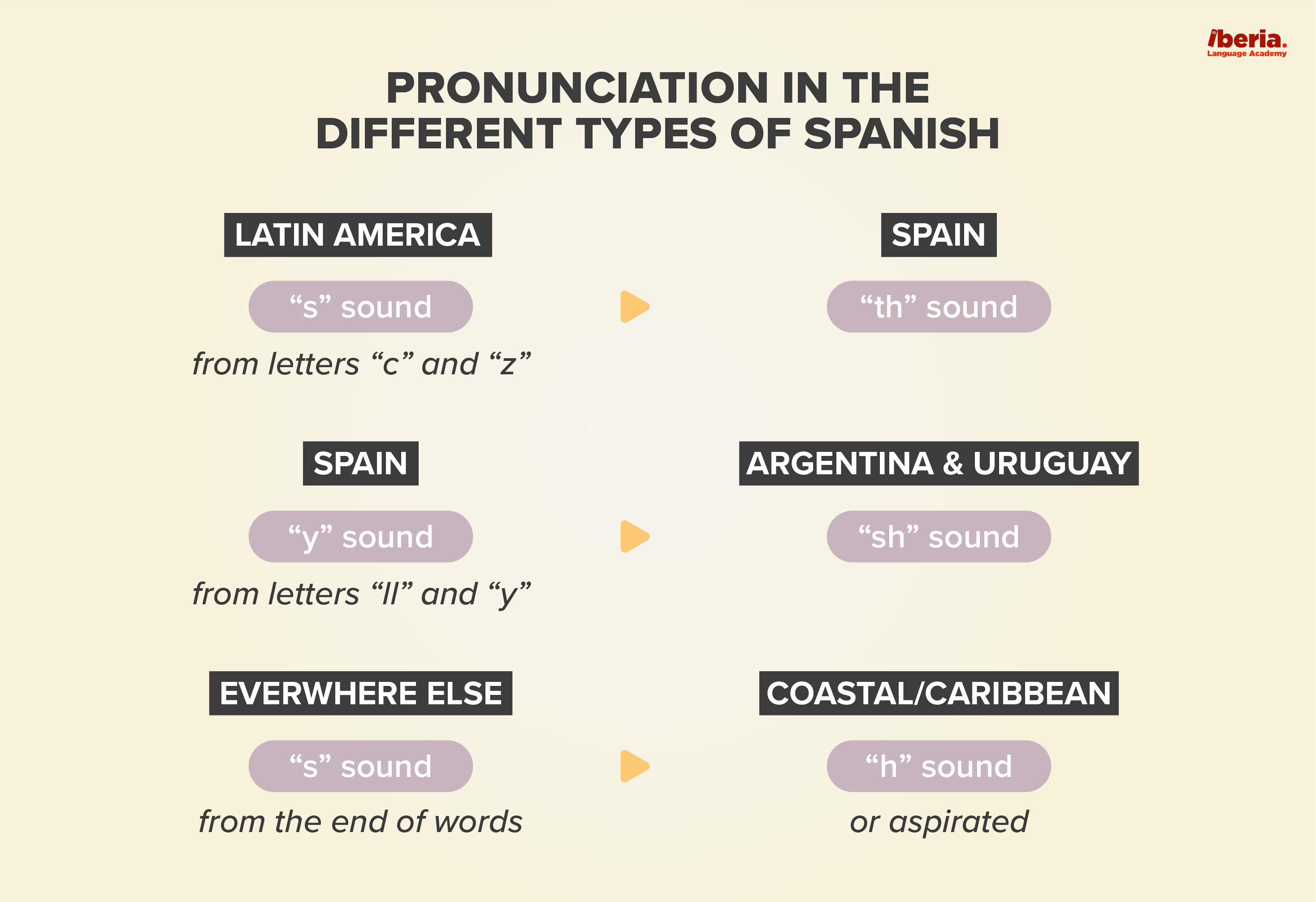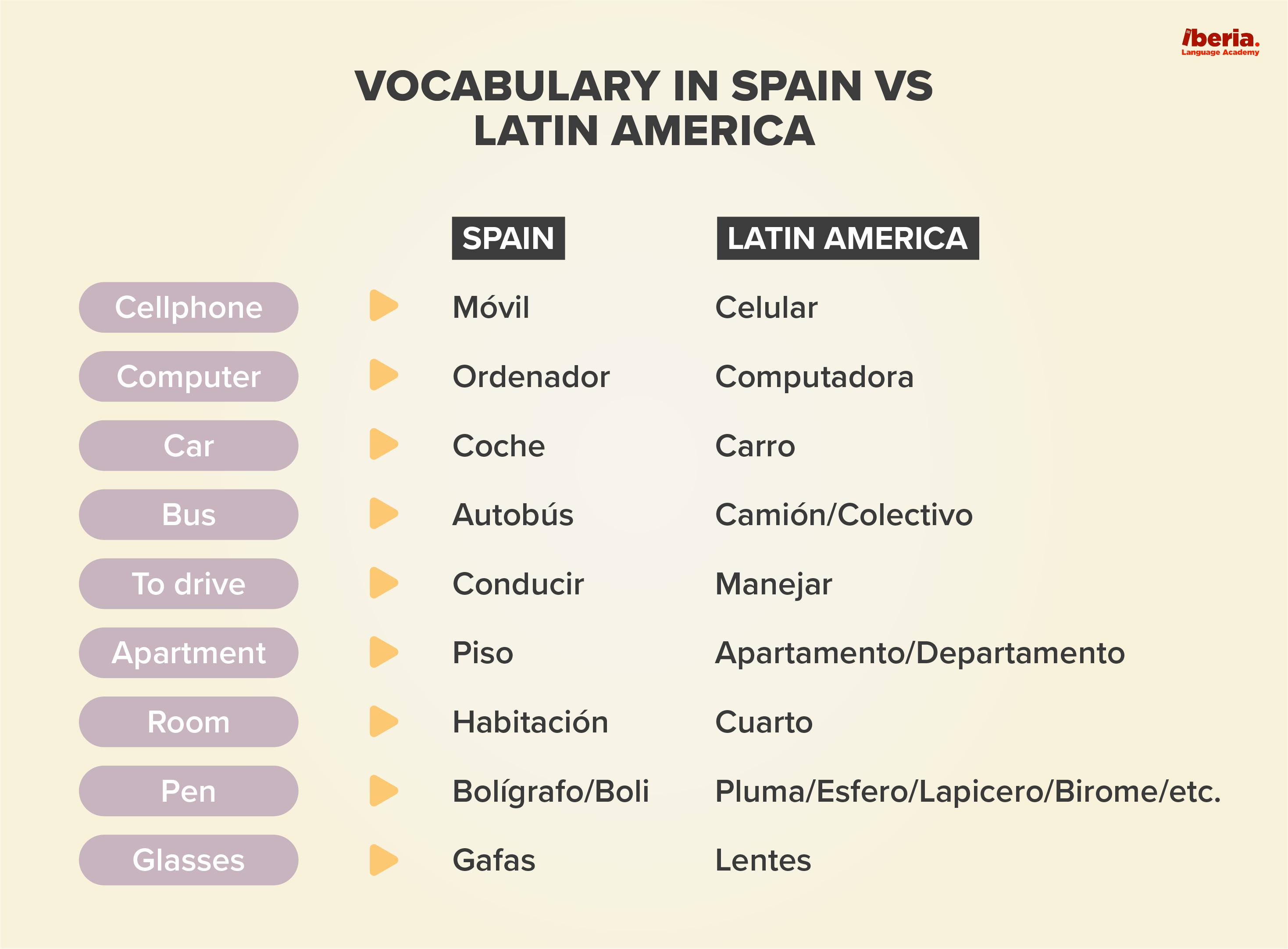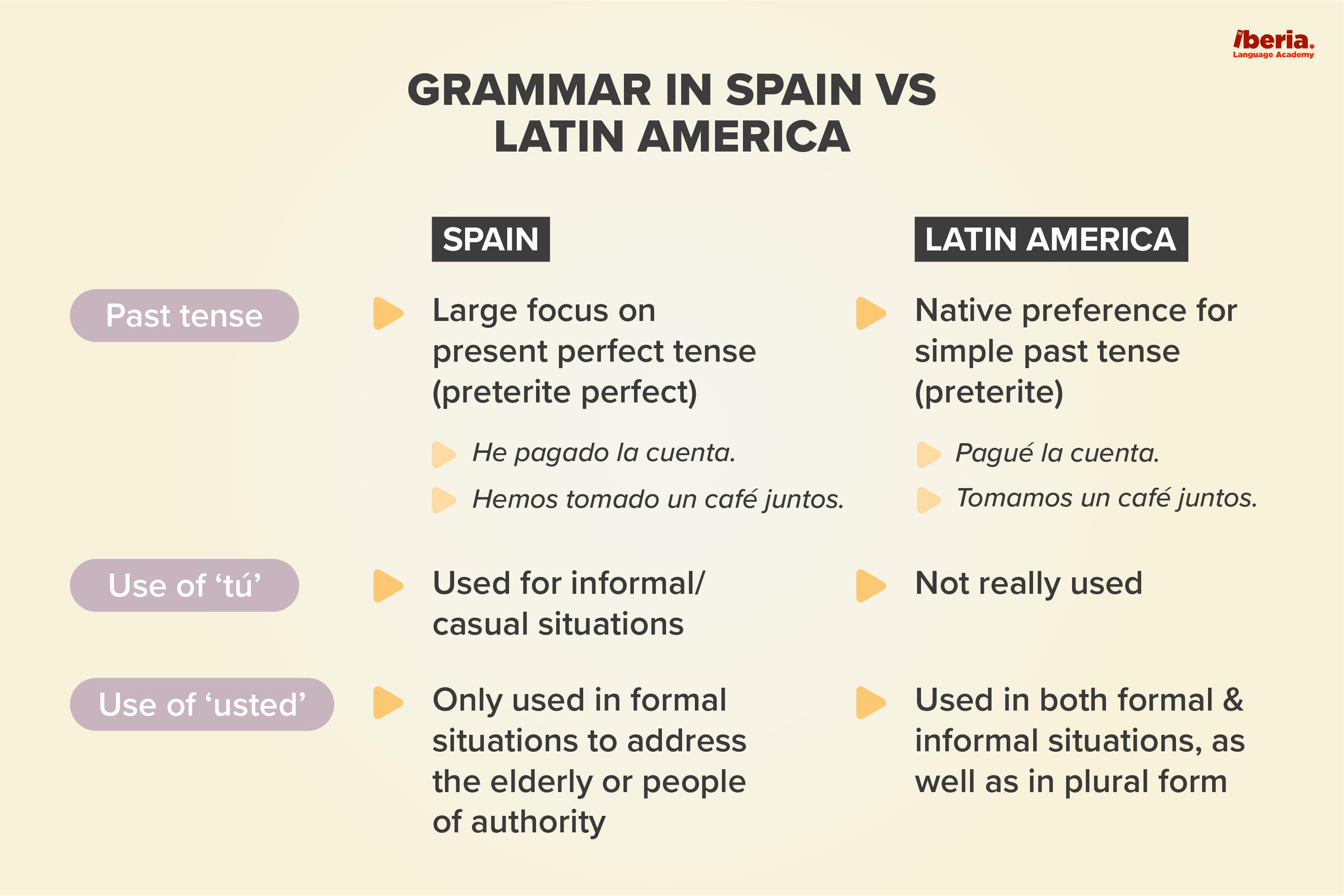Latin American Spanish vs. Castilian Spanish: Differences Explored

If you’re on your Spanish-learning journey, you might have noticed that the Spanish spoken in every Spanish-speaking country differs. This can be super frustrating. You think you’ve finally cracked your vocabulary or your grammar, and then you talk to someone from another country or you go on vacation elsewhere and realize… you might be back to square one.
There are two things to know before losing all hope (please don’t!). One, thanks to globalization, you’ll likely be understood everywhere regardless of what kind of Spanish you speak, as many people are now exposed to the many regional differences. Two, it helps to know where the exact differences lie between the types of Spanish. That way, even if you haven’t perfected them all, you’re aware of what to look out for and pay attention to. In this article, the main focus areas are pronunciation, vocabulary, grammar, and common cultural phrases.
Pronunciation

There are 3 pronunciation differences within Spanish variants that are the most notable: the “the” sound, the “sh” sound, and the aspirated “s”:
The “th” sound
In many parts of Spain, natives replace the “s” sound from the letters “c” and “z” (when they come before an “e” or “i”) with a “th” sound – for example, Barcelona, cielo, or Zaragoza.
What would that sound like?
- Spain: Barcelona → Bar[th]elona
- Latin America: Barcelona → Bar[s]elona
The “sh” sound
In parts of Argentina and Uruguay, the “y” sound in words with “ll” and “y” – such as llorar, playa, and lluvia – is instead pronounced “sh”.
What would that sound like?
- Spain: llorar → [y]orar
- Argentina/Uruguay: llorar → [sh]orar
- Spain: playa → pla[y]a
- Argentina/Uruguay: playa → pla[sh]a
Aspirating or dropping the ‘s’
In many regions in Latin America, especially the Caribbean and coastal regions such as Argentina, Cuba, Chile, Venezuela, Puerto Rico, and the Dominican Republic, but also some regions in Spain such as Andalusia and the Canary Islands, the “s” sound is aspirated or omitted. Mostly, the “s” turns into an “h” sound.
What does that sound like?
- Coastal/Caribbean regions: los perros → lo[h] perro[h]
- Everywhere else: los perros → lo[s] perro[s]
- Coastal/Caribbean regions: gracias → gracia[h]
- Everywhere else: gracias → gracia[s]
Vocabulary

Before we get into the differences in words used in Spanish by region, it’s important to remember that Latin America consists of 33 countries. So naturally, there are many differences in the Spanish spoken in each country. Even within each country, there are differences. Think about it like your own country – no matter how big or small the country you’re from is, there are more than likely different dialects or accents that vary per area.
However, there are many cases in which the same words are used throughout most Latin American countries, greatly differing from those used in Spain. For the sake of keeping this article simple, we’ll cover some of these words and won’t go into depth on the words used in different Latin American countries:
P.S. While it’s generally harmless to use either word – and they might be understood – sometimes, misunderstandings can arise. Take “coger” for example, which, in Spain would mean “to take”, but in many Latin American countries means “to have sexual relations with”. Similarly, “tinto” in Spain means “red wine” but in Colombia means “black coffee”.
Why do we see this disparity? Many words in Latin American Spanish have been taken from English, for example, computadora, troca, and parquear. This is especially seen in countries with closer ties to the U.S. Likewise, heaps of English words have been taken from Spanish. Spanish words from Spain, on the other hand, mostly derive from Latin.
Similarly, many words in Latin American Spanish have been incorporated from indigenous languages like Nahuatl (native to Central Mexico), Quechua (native to Peru), and Guaraní (native to Paraguay). For example, tequila, puma, cigarro, aguacate, papa, chocolate, maracuyá, chinchilla, and quinoa. Some of these Indigenous words are even used in English!
Grammar

Past tense
One of the biggest differences in the Spanish spoken in Spain and Latin America is how past tense is used. In Spain, there’s a big focus on the present perfect tense (preterite perfect), where haber (he/has/ha/hemos/habéis/han) is used to talk about an action that’s just recently been completed or has relevance to the present.
- He pagado la cuenta.
- Hemos tomado un café juntos.
In Latin American Spanish, although the present perfect tense (and use of haber) can be commonly used, natives tend to prefer the simple past tense (preterite). It might seem like Latin Americans only use the latter tense, but that could be because, in comparison, Spaniards tend to use the present perfect tense.
- Pagué la cuenta.
- Tomamos un café juntos.
Tú/Usted
In Latin America, usted is used for the word you in both formal and informal situations. In Spain, usted is used for the word you only in formal situations – reserved for elderly people and people of authority – and tú is used for informal or more casual situations.
For addressing groups of people, Spaniards use vosotros, the plural form of tú, while Latin Americans simply use ustedes, the plural form of usted.
This means that the conjugation for you differs in Castilian Spanish and Latin American Spanish, as the conjugation for usted follows the same format as the conjugation for el/ella.
Common cultural phrases
As with any language, idiomatic phrases and slang will come up and always differ by region. Culture plays a huge role in these phrases that are commonly used and not taught by the book. For that reason, here are a few basic phrases that could be interesting to know:
English: come on! / let’s go!
Spain: venga
Colombia / Argentina / Puerto Rico / Cuba / Dominican Republic: dale
Colombia: hágale
Mexico / Guatemala: ándale
Nicaragua: dale pues
English: okay / alright
Spain: vale
Colombia: listo
Uruguay: ta
Mexico: órale
English: dude
Spain: tio
Colombia: parce / parcero
Honduras: maje
Cuba: asere
Mexico: güey / wey
Argentina: flaco
Puerto Rico / Dominican Republic / Venezuela: pana
Venezuela: chamo
English: cool
Spain: guay
Colombia: bacano
Venezuela / Cuba: chévere
Mexico: chido
El Salvador: chivo
Argentina: copado
Peru: bácan
English: well / eh / so (word filler)
Spain / Mexico / Colombia / Venezuela: pues
Spain / Mexico: bueno
Chile: po (shortened from pues)
Here at Iberia Language Academy, we offer Spanish courses in Barcelona to help you unlock your fluency. Regardless of whether you’re in Spain or a Latin American country, learning the language is the first step, then comes the finessing. Wherever you are in your language proficiency, we hope this article helped you become more aware of what differences to keep an eye out for.
Popular Posts
Las mejores escuelas de español en Barcelona: guía definitiva

Más de 20 datos y estadísticas interesantes sobre el español

Le guide ultime des meilleures écoles de langue espagnole à Barcelone

Español vs inglés: 10 diferencias sorprendentes

Subscribe To Our Mailing List!
Receive course updates, graduate reviews, exclusive discounts and more



